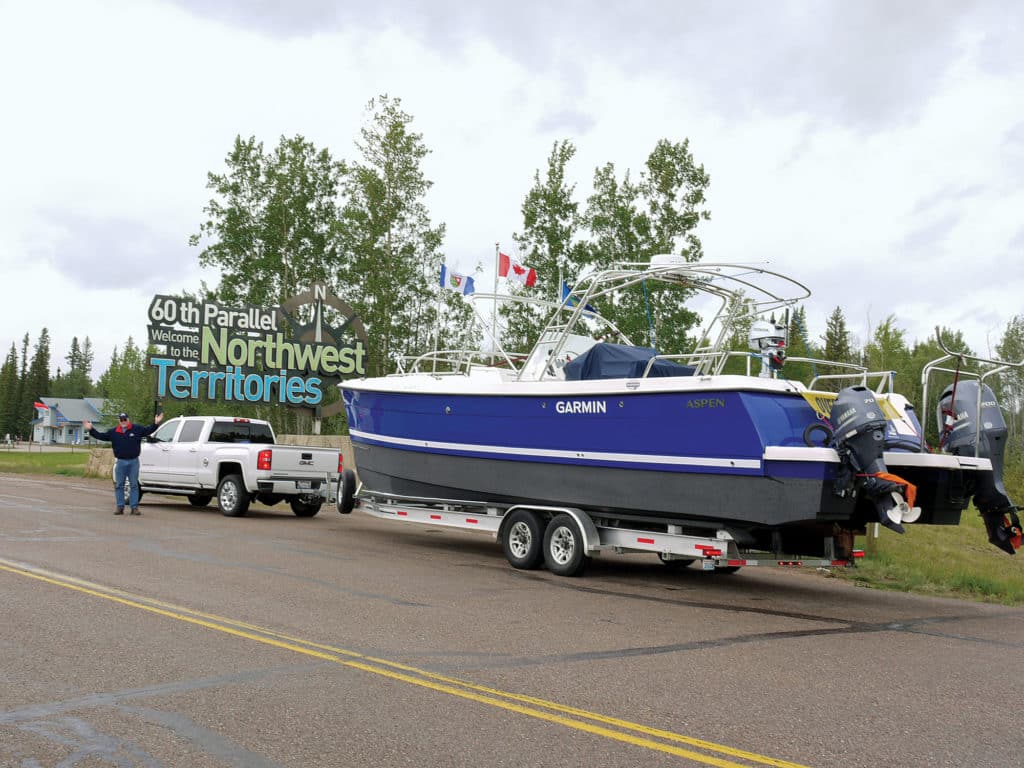
Within 15 minutes of launching an Aspen L107 into the muddy Mackenzie River, we almost ran aground—twice. Perhaps we should have heeded the cautions in the Sailing Directions, which warned the river should only be navigated by those with extensive local knowledge, something neither of us had. As we kept the bow of the boat pointed north, we realized we’d be navigating waters even more challenging.
Over the years, Larry Graf, the owner of Aspen Power Catamarans, and I have shared many adventures, but when he came up with the idea of traveling the length of Canada’s Mackenzie River, I thought he was off-the-scale crazy. As planning progressed and the questions piled up, I realized this would be an epic journey—if we survived it—and I couldn’t miss the opportunity.
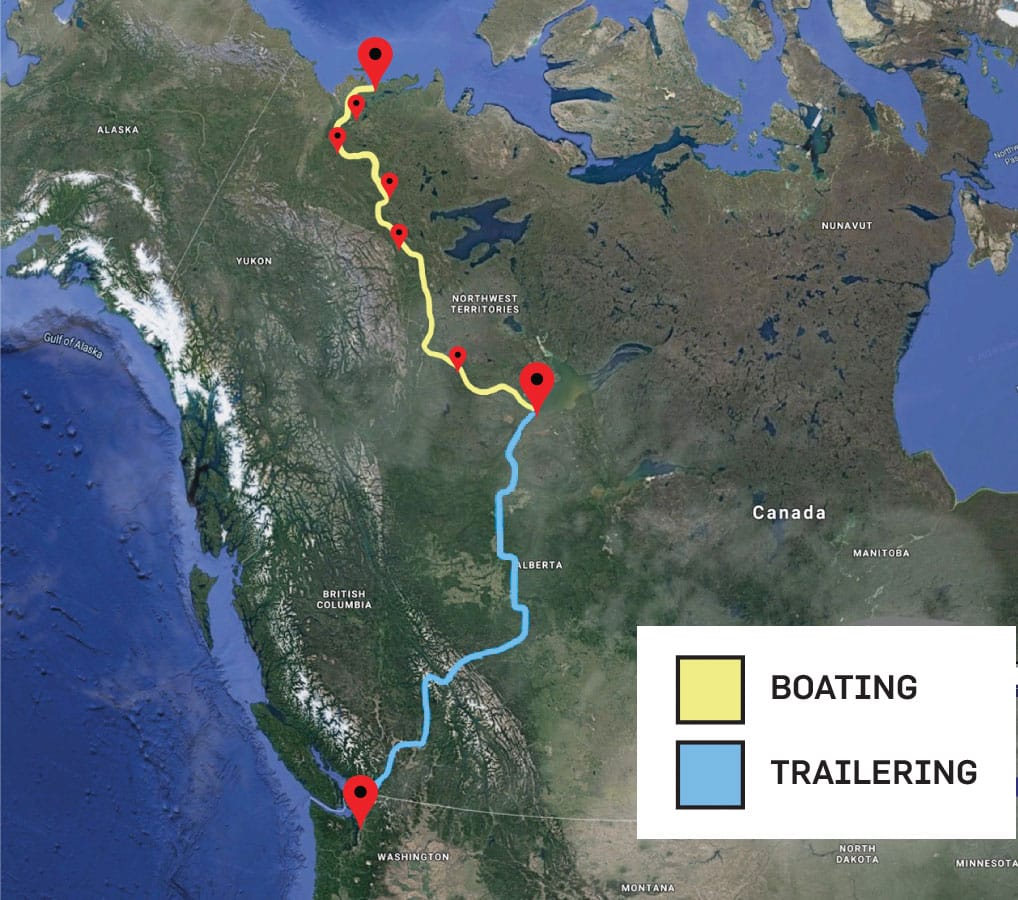
Traveling down a dangerously shallow, 1,200-mile, poorly charted river in one of the planet’s most remote regions presents a unique set of preparation and navigation challenges. But we were out to prove that, with the right boat and the right crew, it could still be fun.
River Runs
The Mackenzie is the longest river in Canada, and second only to the Mississippi in North America. It flows north through the Northwest Territories from Great Slave Lake to the Beaufort Sea some 200 miles above the Arctic Circle, and ranges from just over 100 yards to 4 miles in width. The river freezes from October to May. It is murky, silty, and only navigable by vessels with a draft of 4 feet or less. Traffic is sparse—each summer, only a few tugs pushing supply barges and a handful of adventurous paddlers brave the river. The few small, isolated Dené and Inuvialuit native villages are typically 150 or more miles apart, mostly with no road access. In between are stretches of wilderness with more bears, caribou and muskox than humans. Anyone getting into trouble can’t rely on outside help.
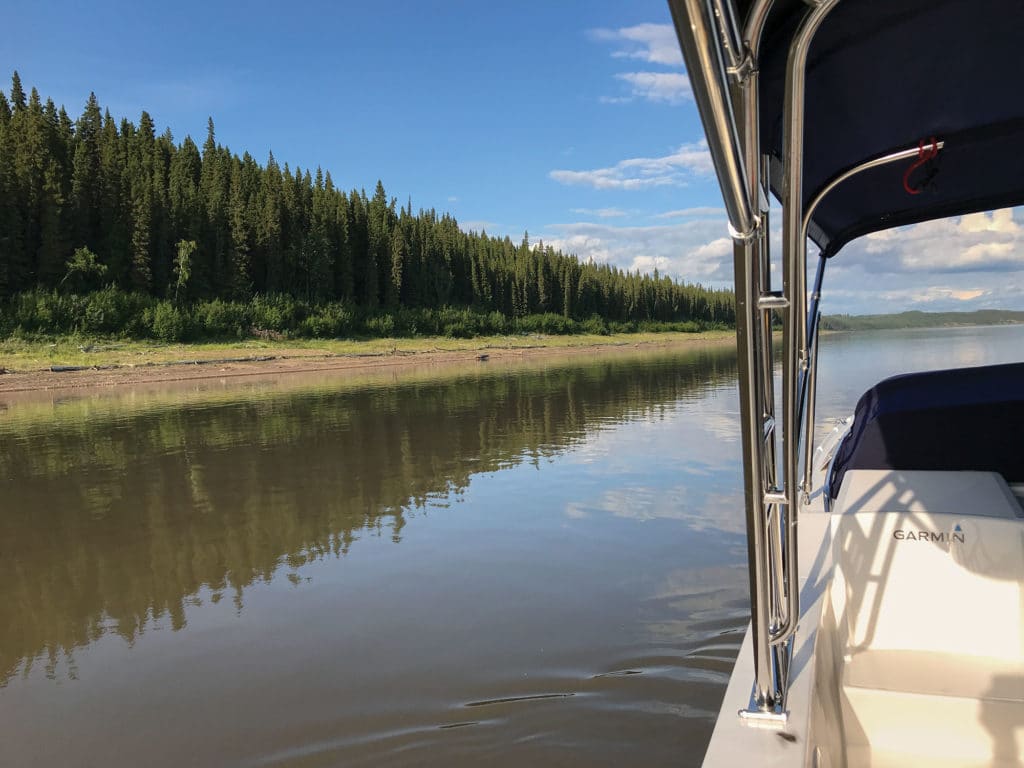
The idea was to tow the boat, appropriately named Arctic Adventure, 1,200 miles from Burlington, Washington, through Canada to Great Slave Lake. We’d launch just after ice-off in July, say our prayers to the river gods, and hopefully make it to the mouth of the Mackenzie in eight or 10 days, stopping only to refuel and sleep.
Cat On the Run
Graf builds full-displacement power catamarans to 40 feet, with top speeds of 30 knots. They’re unique in that they are asymmetrical, with one sponson 35 percent narrower than the other. This slim profile requires less propulsion (and therefore less fuel) when compared to a regular catamaran—and 50 to 60 percent less than a similar-size planing monohull. I had reviewed several Aspens over the years and found them to be exceptionally stable, with an incredibly soft ride and amazing fuel efficiency (more than 3 miles per gallon at 16 knots).
Standard power for Aspens is a single diesel inboard in the larger starboard hull. Recently, though, Larry re-engineered his 32-foot model for twin outboards on pods—a 200 hp Yamaha on the starboard hull and a 70 hp Yamaha on the port. (Boating’s review of this boat, a Boat of the Year finalist, is available here.) Graf also decided to build an open version of the 34 with a center console. With a draft of 31 inches (21 with outboards at half tilt), the 34 would be ideal for the shallow Mackenzie. Its range, with a fuel capacity of 170 gallons plus 10 5-gallon cans, would be about 350 miles, with reserve. The jerry cans would be essential because we were uncertain where we could find fuel.
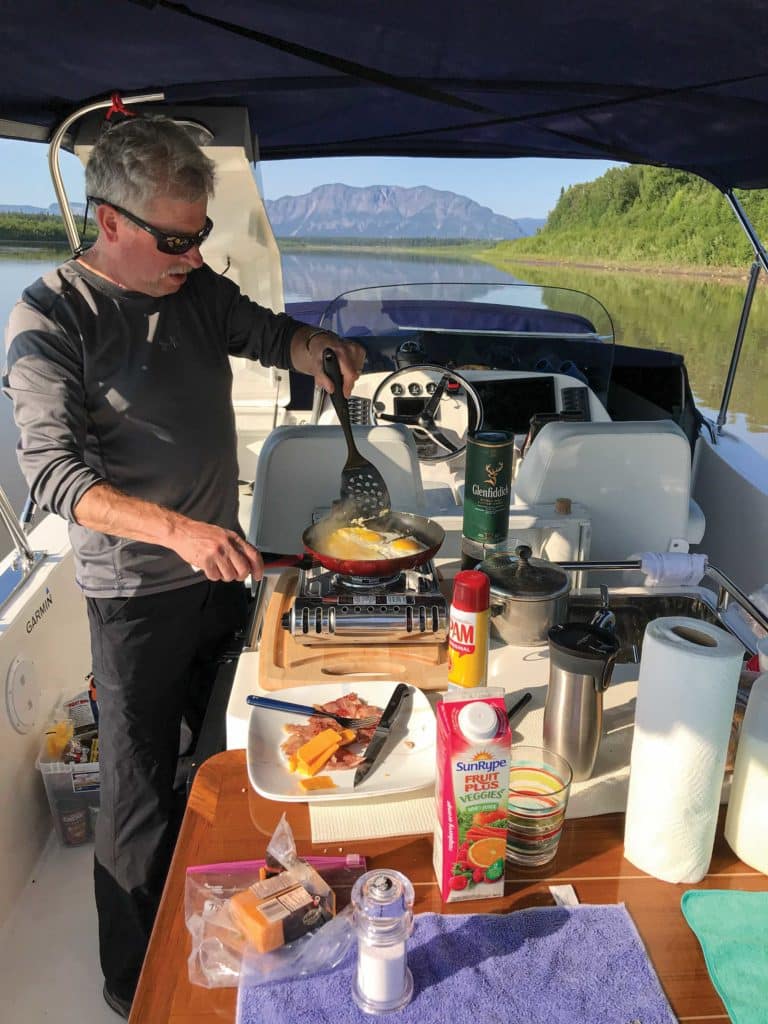
Apsen’s open model required a number of modifications to allow us to live aboard. Graf created a clever galley/dining module fitted aft of the two helm seats. It included a foldout teak table, teak drawers, two swing-out stools, a sink, fridge, and cutout for a portable stove.
A step-down head compartment was built into the port (narrower) hull and accessed via a hinged set of steps. Two single settees forward of the helm doubled as our berths, while a low-slung canvas bow cover would keep us dry and protected from bugs and adverse weather.
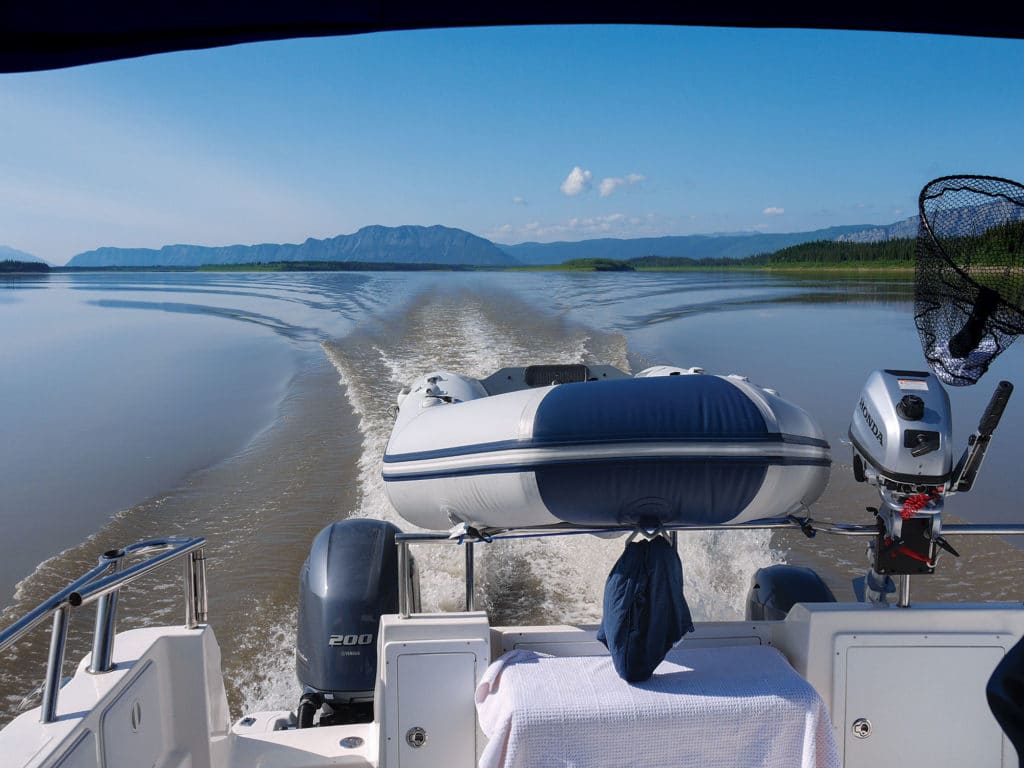
We were warned about hordes of huge horseflies, mosquitoes and no-see-ums, so we added mosquito net sewn to fit under the Bimini to cover the console and dining area. We were also warned about grizzly, black and polar bears, so a set of high plastic boards with staple rails was fitted to the boat’s swim platform.
We knew we would risk running aground, so Graf included equipment for kedging/winching us off. One strategy would be to inflate the dinghy under the tunnel to help lift us off the bottom and, if we were holed, to place inflatable fenders under the hulls so the boat could be rolled ashore for hull repairs below the waterline. We also had a full set of spares for every system aboard, including six props and a gear case for the big outboard. Together, the spares and safety equipment added more than a ton of weight. But we were ready to answer the call of the wild.
Onward and Northward
Soon after launching on July 2, we realized we had entered an unknown world. We motored past low-lying, tree-lined shoreline day after day along this vast silty waterway, averaging a speed of about 23 mph.
With no electronic charts available for this river, we had to rely on paper charts, which is normally not a problem, but in this case, it involved some significant risks. One was that the river had not been surveyed since the 1990s, and ice and relentless siltation transforms the depths and navigable channels significantly from year to year. Each year, the Mackenzie’s 700 or so unnumbered can buoys are removed before ice-up, then each spring, the Canadian coast guard must determine the deepest new channels and place them (and range markers) accordingly, then the agency must constantly reposition those buoys dragged out off-kilter by the strong currents and debris. Regardless, we trimmed our 26 paper charts and taped them together, then mounted them on rollers inside a custom-made box so we could scroll through them.
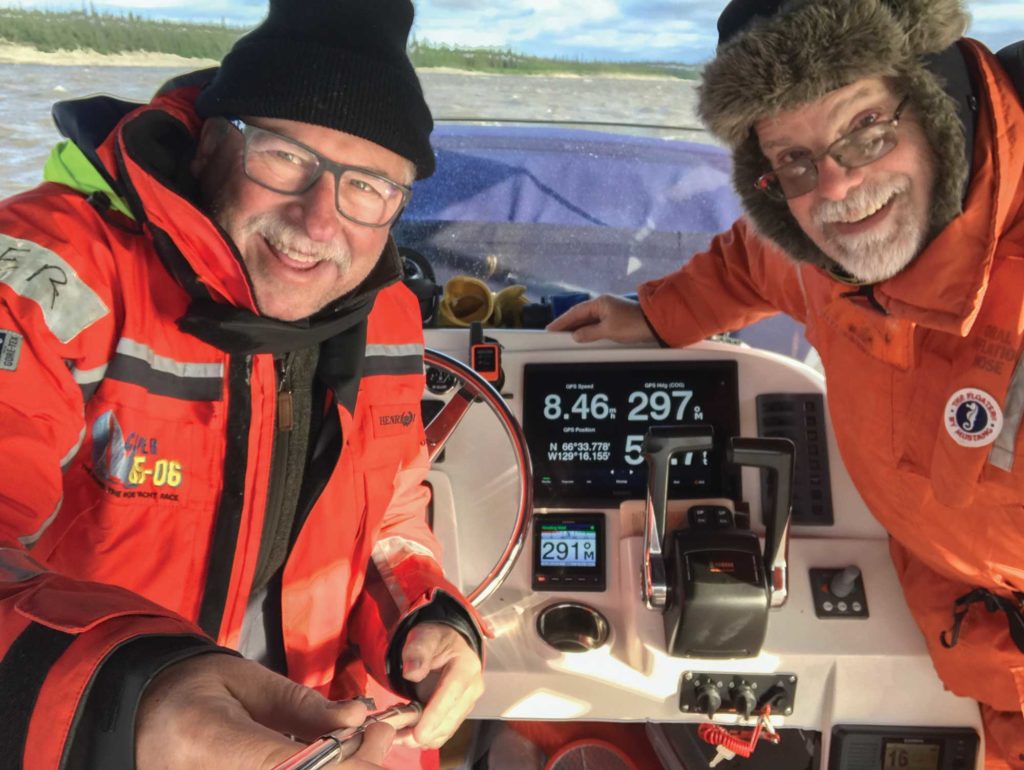
We still needed some form of electronic aid that would allow us to lay down a GPS track on a plotter. The only available options were land-based topographic maps. After much research, we acquired Garmin’s “Topo Canada, Northwest” chart chip. It was produced about 10 years ago, and it did not show depths, just an approximate outline of the shore.
Navigation proved exponentially more challenging than we had imagined. We soon discovered that many of the topo chip’s charted islands were no longer there, and numerous new islands had appeared. Spotting the red and green cans was a real trial. They were often miles apart. Many were half-submerged and throwing frothy wakes from currents that run up to 9 knots. Some sections were not buoyed or completely different than the charted channel. On the plus side, shoreside range markers made navigation slightly safer.
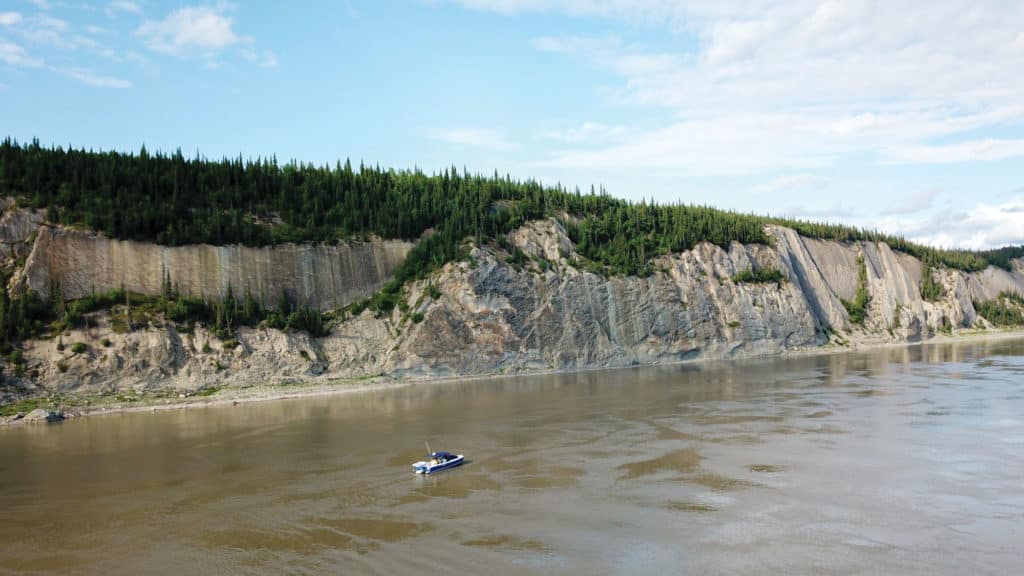
Still, we enjoyed some sections of spectacular scenery, including towering, craggy mountains and steep bluffs. Mostly, however, there was just the flat, marshy, brushy terrain of the boreal forest for endless miles. Where there were no buoys, we were forced to guess the deepest route. We had to back out of shoal water dozens of times, our mouths dry and hearts beating fast. The shallow-water alarm was constantly screaming, and when the depth shallowed to 3 or 4 feet, we’d quickly back up and hunt for deeper water.
On day six, we were in the midst of searching out a path through one of those super-shallow, missing-buoys sections when we crossed a major landmark, the Arctic Circle, at latitude 66 degrees, 33 minutes north. Other than some smiles, shouts of joy, high-fives and a selfie in front of the chart plotter, there was no other milestone on the river.
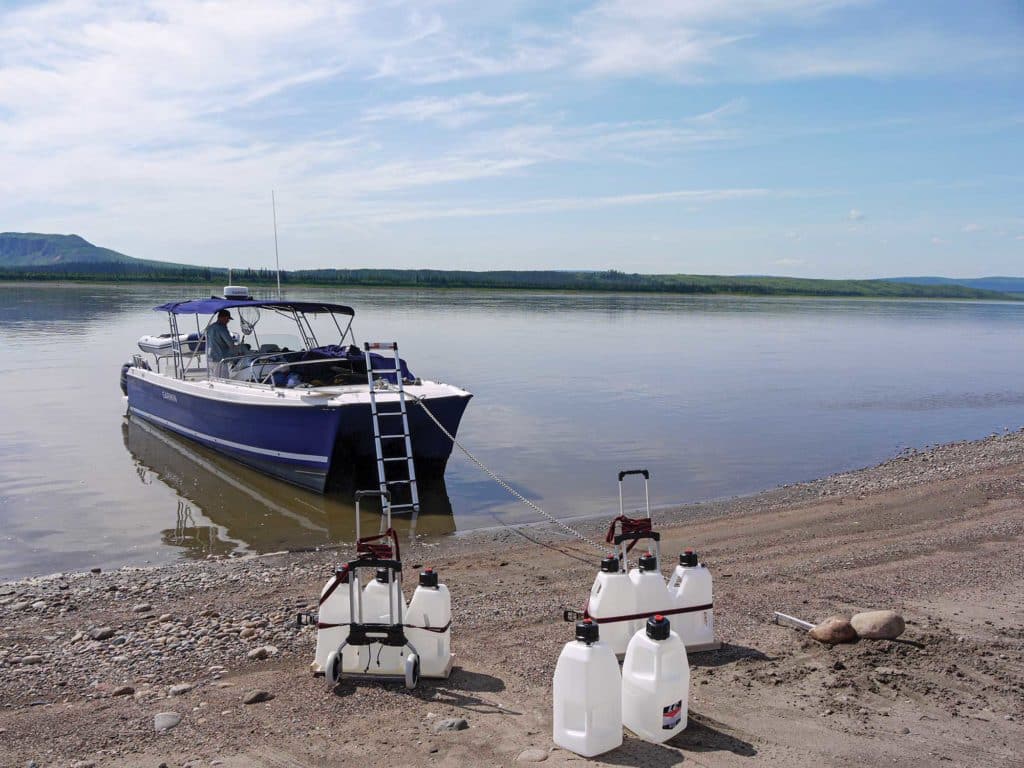
We stopped at several tiny Dené villages, where curious locals with pickup trucks generously helped us lug our jerry cans. Most of the water and air-access-only villages have populations between 100 and 500, and jobs are few and far between. Each village has its own electrical generating station, a band office, a scattering of houses, a single Northern Store (a holdover from the fur-trading days) and, surprisingly, excellent internet service. Larger centers such as Fort Providence, Norman Wells and Inuvik were more like regular small communities with populations from about 700 to 4,000.
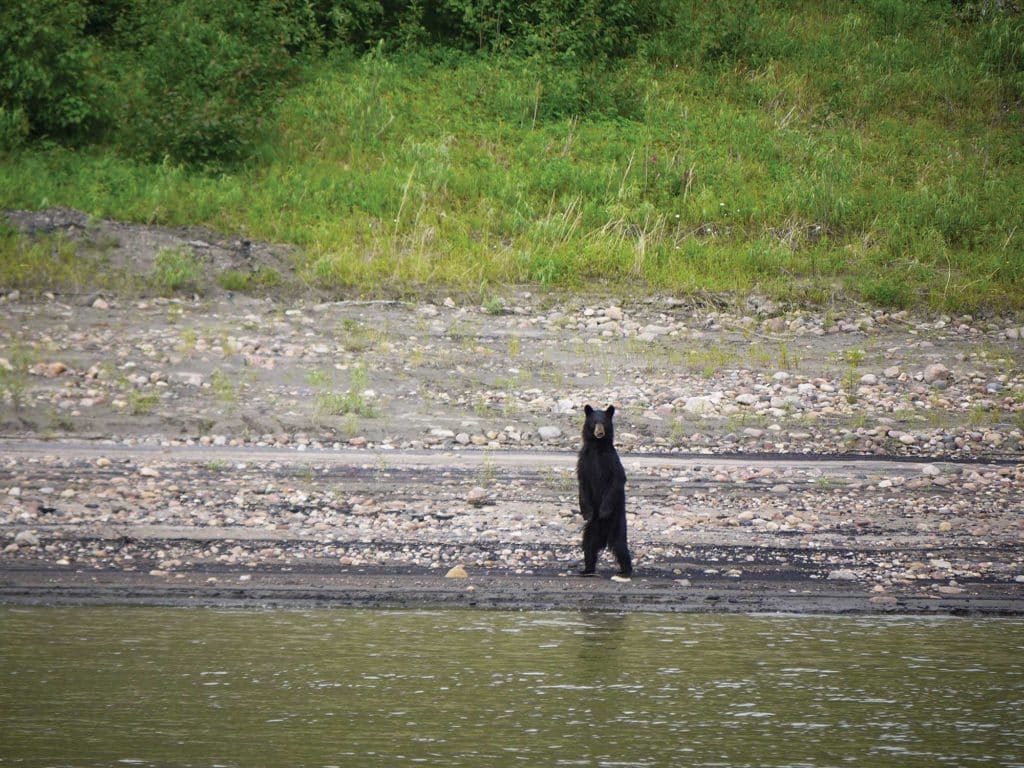
Due to the annual freeze-up and changing river levels, there are no permanent docks on the river. Instead, a gravel road typically leads down to a beach where the locals drag ashore their tin boats, primarily used for subsistence fishing and hunting. When beaching, we’d nose up to the beach, then deploy our telescoping bow ladder and carry an anchor ashore. However, with currents typically running parallel to the beach, it was not the most comfortable situation.
Every evening, we’d search out some form of shelter from the relentless current—a slough where we could anchor parallel to shore or, in some cases, tuck into a river mouth—then set the hook and have a drink and dinner. We bought only prepackaged and canned food because we didn’t want the smell of cooking to attract bears. Even with bugs and bear worries, evenings were the only time we could let down our guard. Because we were in the far North, the sun never really set.
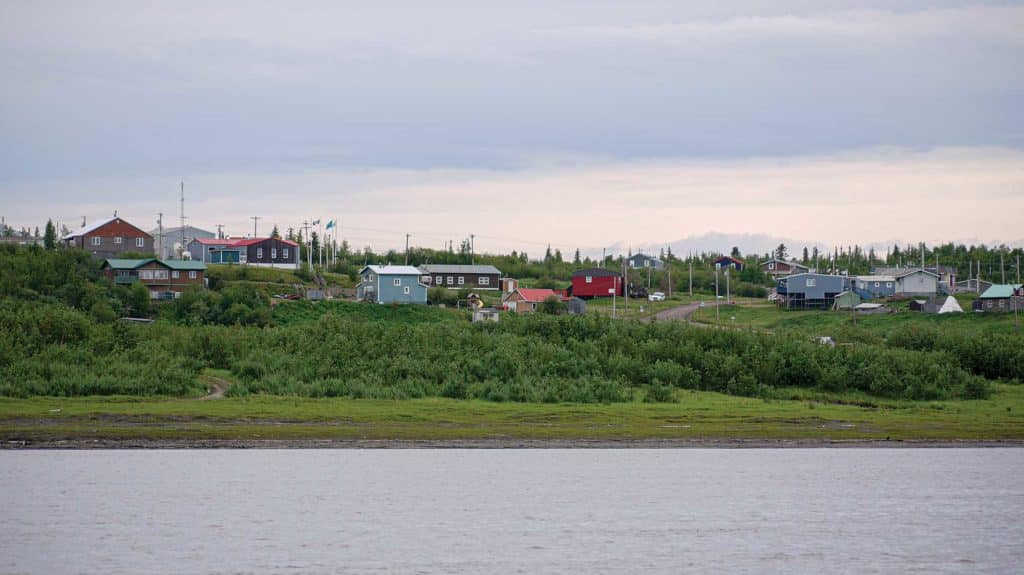
Underway, we spent half the days facing a 30-plus mph headwind. When underway at 23 mph, the combined wind speed forced us into our heaviest foul-weather gear, wool hats and gloves. However, when stopped for fuel or for the night, the temperatures were in the 60- to 70-degree range, though we still used the diesel-forced air heater in our canvas shelter most nights.
Surprisingly, we saw a bear only once. But the predators were there. Shortly after our trip, we heard that a canoeist had been mauled to death by a grizzly.
Stretch Run
On day seven, when we finally reached Inuvik, leaving a 90-mile push to the mouth of the Mackenzie, we were told the route was not yet buoyed. Thankfully, a local tour operator offered us a screenshot marked with his route to the ocean. The next morning, we set out. We again came dangerously close to running aground several times. Fortunately, at about 1 p.m., we poked our nose into the Beaufort Sea and breathed massive sighs of relief. After seven hair-raising days, we’d made it. Despite having arrived at our destination, we were still surrounded by the same murky brown water, but now the horizon stretched into infinity. Behind us were the low-lying, treeless islands of the delta. (No trees grow this far north.) Somewhere just over the horizon, the annual beluga whale hunt was taking place, and we knew polar bears were wandering the tundra. But in that moment, there were only us, the boat, the gentle slap of waves on the hull and nothing else in the world.
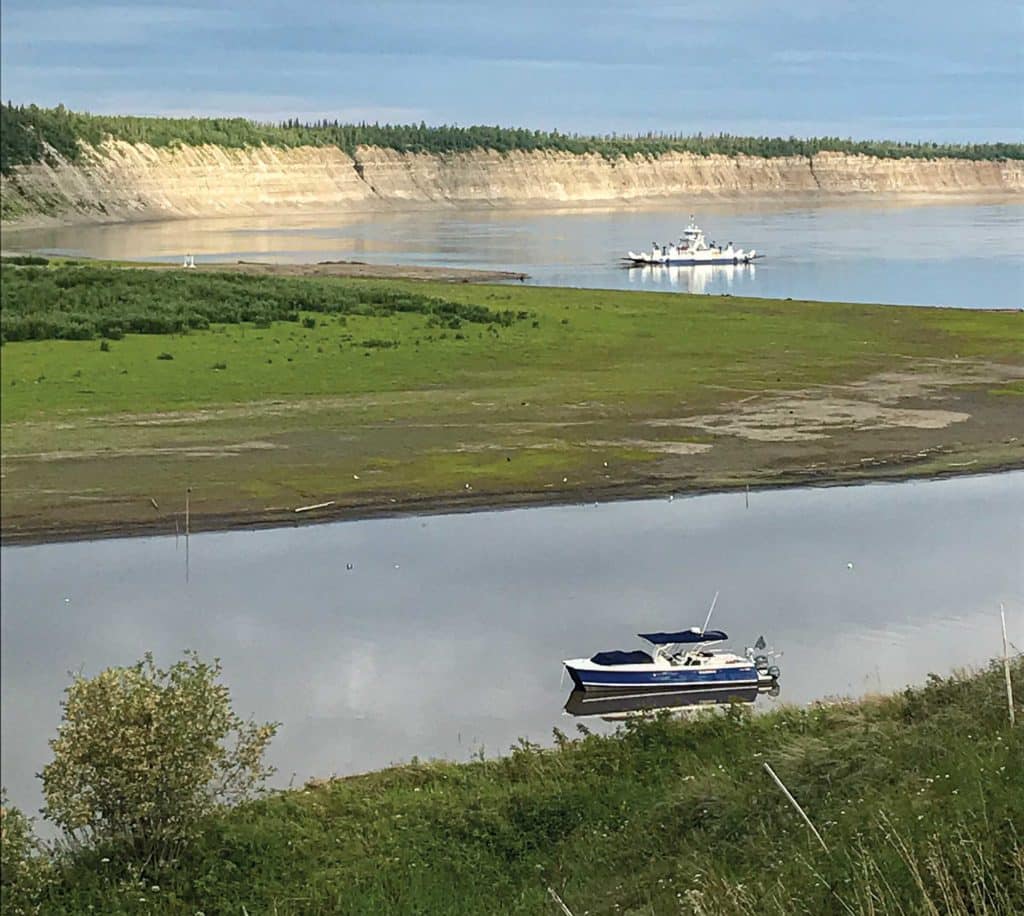
The Aspen and its outboards performed flawlessly, and nothing on board broke. Despite the added weight, we averaged about 2.5 miles per gallon, mostly at about 15 to 20 knots. In the end, I couldn’t imagine a vessel more suited to this unique challenge.
Fortunately, Graf and I are both skilled navigators. Without both of our vigilance and efforts to keep on track, the trip could easily have turned into a disaster. But we made it, and it was a truly unforgettable experience.









